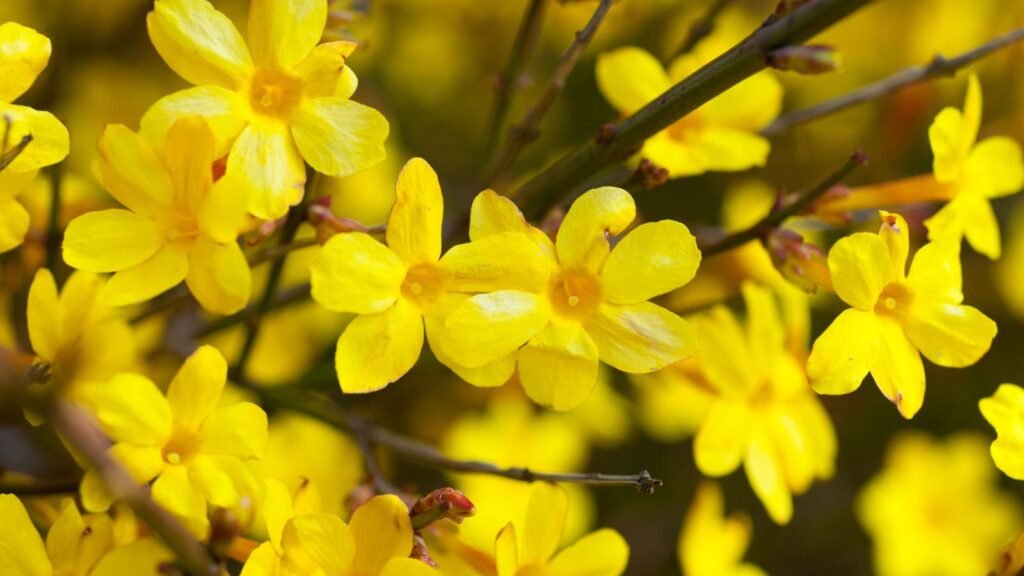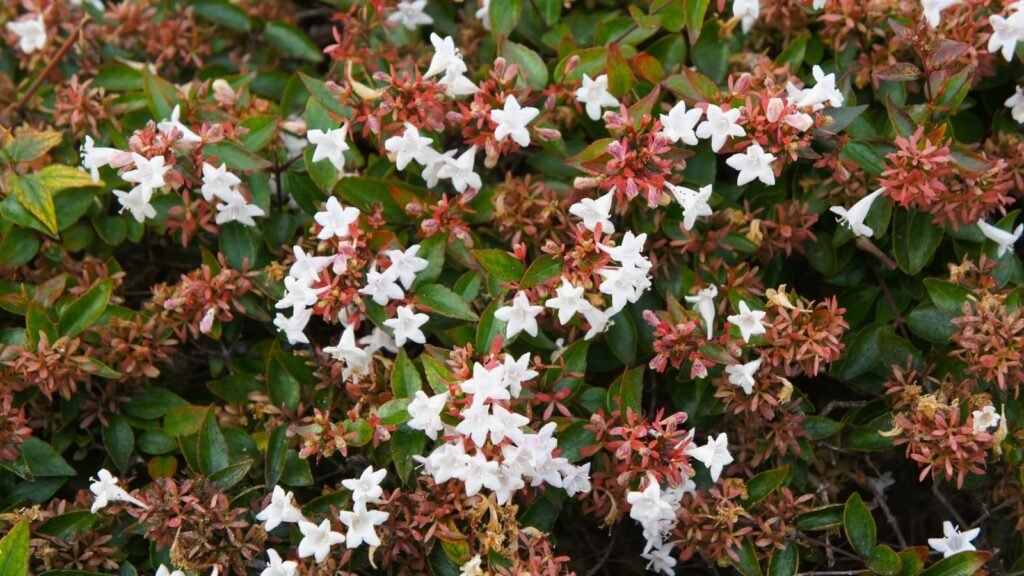Bright green, healthy boxwood shrubs are always the goal. As gardeners, we want them full, round, and vividly colored. We want them to stand at attention in uniformity beneath the front picture window. We want them shaped like perfect orbs and rectangles with no bare spots, and we want them to look good even in winter.
Boxwood shrubs (Buxus spp.) come in roughly 150 species and range in height from two to ten feet. They are hardy in zones 5 through 9 and have a dense, compact branching structure with very small leaves. As flexible evergreens with shape-shifting potential, boxwoods have become the go-to shrub in landscapes everywhere.
Expensive by nursery-grown retail plant standards, boxwoods are a major investment for most homeowners, and we want to care for them in a way that will prolong their life and beauty. One of the top maintenance priorities for this foliage-centric shrub is proper fertilization. Do it right, and you’ll likely have the full, luscious green evergreens you desire. Do it wrong, and you may find yourself with yellow leaves and dying branches.
For many of us, fertilizing boxwood is a guessing game or an exercise in misinformation, but it doesn’t have to be. To put you on a path to vibrant, healthy boxwoods, we’re offering five tips to help you get the job done right.
Test and Amend Your Soil


Yellow or dull leaf color is a major sign that your boxwood is nutrient-deficient and not getting enough nitrogen. All plant roots draw nitrogen from the soil as part of the photosynthetic process that gives leaves their bright green color, and boxwoods consume this nutrient at a high rate.
If your soil is sandy, loamy, or lacking organic content, it’s quite likely deficient in nitrogen. Before you make a fertilizer plan for your boxwoods, have the soil tested. Available at your local nursery or your favorite garden goods website, a soil test is easy to perform and will tell you a great deal about the nutritional quality of your soil.
Once you have the results, you should also take a look at the pH level and amend your soil as needed. You will often hear (mistakenly) that boxwoods are acid-loving plants, but boxwoods actually prefer neutral soil and grow best if pH levels are between 6.5 and 7.5. If your soil’s pH is too low, adding a lime-heavy material will help reduce acidity. If it’s too high, a sulfate-based product will help bring acidity down.
Once your soil’s pH level is balanced and your nutrient levels are assessed, you’ll be better able to select the right fertilizer for the job.
Use the Right Fertilizer for Your Soil


Fertilizer comes in liquid or granular form in both synthetic and organic varieties. Both contain the required nutrients and are considered equally effective, so there’s no right or wrong there. We recommend purchasing a granular, slow-release product because it’s easier to measure, control, and distribute.
If your soil test indicates a nitrogen deficiency but adequate amounts of phosphorus and potassium, select a fertilizer with an N-P-K ratio of 10-6-4. This means the product will contain ten parts nitrogen, six parts phosphorous, and four parts potassium.
If your soil has adequate nutritional content all around, you can opt for an even fertilizer with an NPK of 10-10-10. In slow-release form, this product will remain active in the soil all season and throughout dormancy to deliver the nutrients your boxwoods require to stay healthy and green.
Apply Annually in Spring


Fertilize boxwoods every spring for best results. Since spring is also the ideal time to prune boxwood shrubs, they will be entering an active growth phase that consumes large amounts of nutrients from the soil. Giving them a boost at this time of year is beneficial, even if there is no deficiency.
Follow the fertilizer manufacturer’s directions for quantity and spacing as not all products have the same density. Typically, the rate is about one pound per 100 square feet, but not always. Use a gloved hand to direct granules at the soil around the base of the shrub, taking care to avoid leaves, trunks, and branches. Applying granules to these plant parts may cause leaf scorch or tissue death. Always water before fertilizing.
Unlike many trees and shrubs, boxwood roots extend beyond the shrub’s drip line by a foot or so. Keep this in mind as you apply your product, covering the soil not just beneath your boxwoods but around them as well.
Water Boxwoods Weekly During the Growing Season


This is the step that many gardeners overlook, and doing so can lead to fertilizer failure. Boxwoods enjoy moist, well-drained soil, and their roots must be pliable if they are to absorb the supplemental nutrients you’re offering them.
A slow-release fertilizer, particularly a granular medium, is designed to break down gradually throughout the season. This means there will be bits of it in the soil long after you’ve made your initial application, and these bits require moisture for activation.
Water your boxwoods slowly and deeply after fertilizing in spring, directing a soaker hose or misting wand directly at the soil and roots. Do so until the top two inches of soil are sticky when you insert your index finger but stop well before puddling begins. The amount of time spent watering your boxwoods will vary, depending on climate and soil makeup.
Continue to water weekly in this manner for the remainder of the growing season (more if you are experiencing drought or extreme heat). When your deciduous plants lose all their leaves and go dormant (or when the ground in your region freezes), stop watering until you notice signs of new growth next season.
Do Not Fertilize in the Fall


You may read articles or product labels telling you to fertilize boxwoods in the fall, but we urge you to disregard this advice. Fertilizing boxwoods leads to new growth, which is a good thing in spring but a bad thing in fall.
With winter approaching, green shoots and leaves are not likely to ‘harden off’ before cold temperatures move in. As a result, your boxwoods will be susceptible to winter stress, disease, and blight – all things that will give you the brown, crispy shrubs of your gardening nightmares. Again, keep watering until the growing season is complete, but skip the fertilizer in the fall.
Final Thoughts
When it comes to fertilizing evergreen shrubs, more is not better. A boxwood shrub that’s given too much nitrogen will turn brown or bronze in much the same way a shrub that has a nitrogen deficiency will. Always follow the manufacturer’s instructions, and when in doubt, err on the side of caution. A pale, malnourished boxwood is easier to nurse back to health than a dead one. Next year, you can make adjustments and bump up the application as needed.



